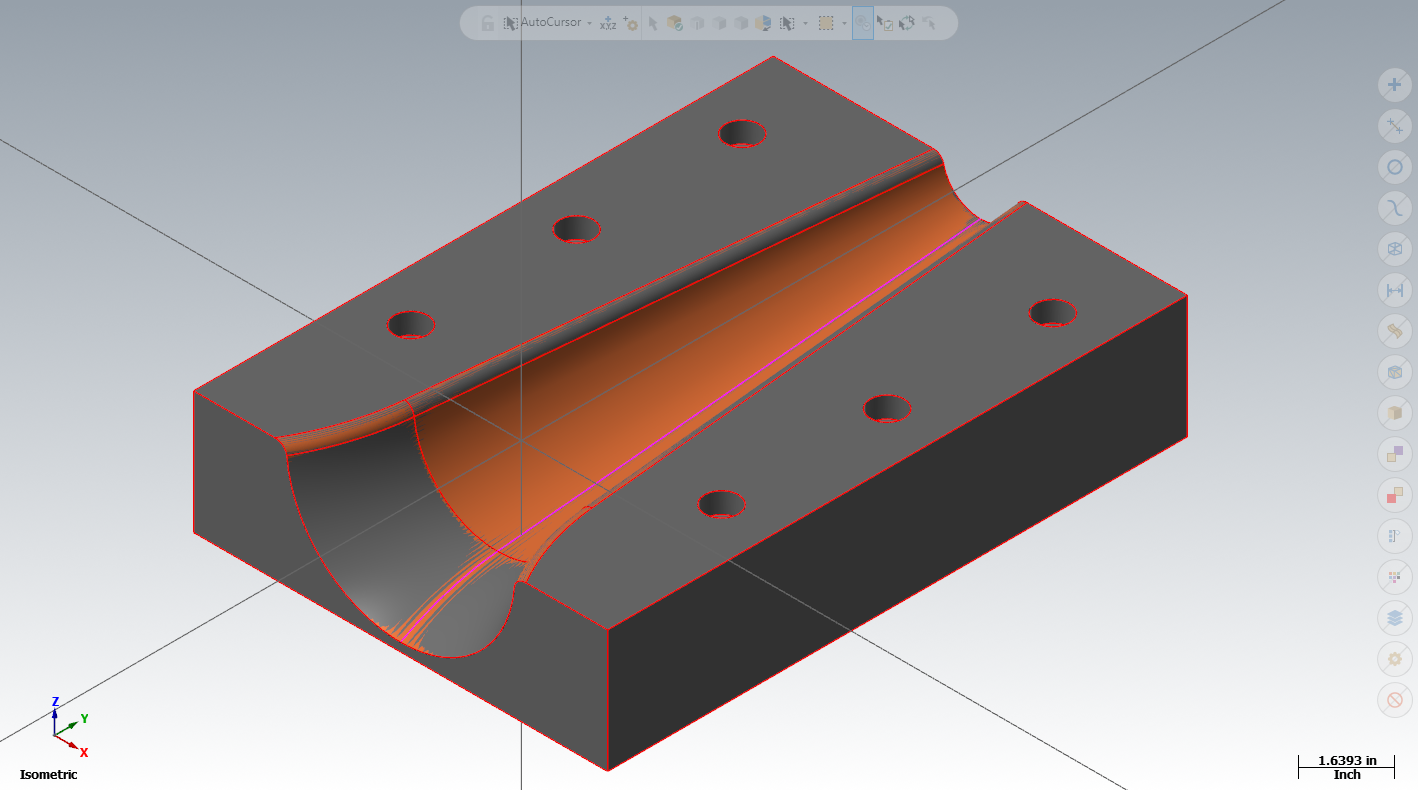
Comparing Mill, Mill 3D and Multiaxis
We explain the different capabilities of Mastercam Mill, Mill 3D and Multiaxis licenses to help you decide which will work the best for you.
By John Stauffer and Callie Morgan
Tuesday, November 29th, 2022, 11:30 AM PDT
Mill
Mastercam Mill licenses are the most common license type for milling machines. A Mill license is suited for mainly 2D work for 2.5 to 5-axis machines or less. 3D toolpaths can still be accessed with a standard Mill license, as long as you stick to a single surface or solid face for the machining geometry. Mill gives you unrestricted access to 3D Optirough and 3D Contour toolpaths (excluding Mill Entry).
The Mill license opens up the Dynamic Milling strategies that Mastercam takes great pride in. Dynamic Milling uses a patented algorithm to determine a cut path that keeps tool load constant. This means extended tool life, faster cycle times, and less wear on your machine tools.
What Type of Work is Ideal for a Mill License?
A Mill license can even be used for positional 4 or 5-axis machining as long as it is supported by your post. If your parts are prismatic in nature, and don’t require full simultaneous 4 or 5-axis motion, you can probably program them start to finish with just a Mill license. Accelerated Finishing tools have limited use in a Mill license because the toolpaths that are primarily used with a Mill license don’t have very complex compensation algorithms.
Mill licenses are ideal for flatwork, prismatic parts, 3-axis vertical mills, and basic positional multiaxis work.

This part made with vertical walls and flat floors is a classic Mill license part (Above).

Mill 3D
Mill 3D is the next tier of Mill licensing for Mastercam. Mill 3D brings a few extra goodies to the table that can be very useful in the right circumstance. While the roughing capabilities between Mill and Mill 3D are more or less the same, Mill 3D is more capable of finishing in 3D with the 3D HST toolpaths. These additional toolpaths can compensate for multiple surfaces or solid faces all in one toolpath. That means faster and easier finishing of more complex geometry.
What Type of Work is Ideal for a Mill 3D License?
Mill 3D is commonly used in the tool and die, job shops and the automotive industries. This license is ideal for making molds, organic shapes/decorative work, and more complex positional multiaxis parts.
Mill 3D can be used for 3+2 and 3+1 machining, as long as your post supports it. 3+2 and 3+1 are the most common types of multiaxis machining out there. This means that as long as you don’t need full multiaxis simultaneous motion for your parts, then it’s likely that Mill 3D is all you need to create complex parts. Mill 3D is capable of using Accelerated Finishing tools efficiently to create beautiful finishing passes below the equator of the tool.

Multiaxis
Many people think of Multiaxis as a license, but it’s actually an add-on purchase for a Mill 3D license. The Multiaxis add-on is required if you are programming parts that require full simultaneous 4 or 5-axis motion.
What Type of Work is Ideal for a Multiaxis Add-on?
A Multiaxis license is commonly used in the aerospace and automotive industries. It’s also ideal for high-end job shop work that involves complex simultaneous multiaxis parts and automation that demand high-efficiency.
If you need to move a rotary axis while cutting, and you don’t want to use axis substitution, then you will need Multiaxis. The Multiaxis license and toolpaths are also required if you want to use Accelerated Finishing tools and compensate above the equator of the tool. This is really useful for undercut features, even in 3 or 4-axis machines.
Even if you don’t require full simultaneous motion, the Multiaxis add-on will still be useful to you! The toolpaths in the Multiaxis group can be limited to work in just 3 or 4-axis in the Tool Axis Control page of each toolpath. If your machine doesn’t support full simultaneous motion, but you still need the flexibility of the Multiaxis toolpath cut patterns, these toolpaths can also be locked to a 3+1 or 3+2 approach. This can provide additional room for flexibility for your cutting motion and opens the doors to let you do any machining you want.
The Unified toolpath alone can handle the vast majority of 3D finishing. An added benefit of this approach is being able to program nearly any finishing moves from a single interface and limiting the number of settings and parameters you need to know to make your parts correctly and accurately.
Another benefit of a Multiaxis license is the addition of the Deburr toolpath. Machine deburring is a form of automation that your operators (or yourself) can appreciate. Adding in this toolpath can drastically reduce the amount of post-machining processing your part needs to go through to be customer-ready.

Curious about the differences between more than just Mill, Mill 3D and Multiaxis? Check out our License to Mill presentation on Streamingteacher Pro for a deep-dive on the capabilities and limits of different Mastercam product licenses, including software and hardware license types.
If you ever have any questions about licensing options, reach out to your local Mastercam Reseller! They are happy to help you find the product you need to make your machining dreams a reality. If you don’t know your reseller, fill out the form on mastercam.com/find-a-reseller/ to find them.
For access to more in-depth Mastercam training content, sign up for a Streamingteacher account here!
Follow Us!
Facebook:https://www.facebook.com/Streamingteacher
LinkedIn:https://www.linkedin.com/company/streamingteacher/